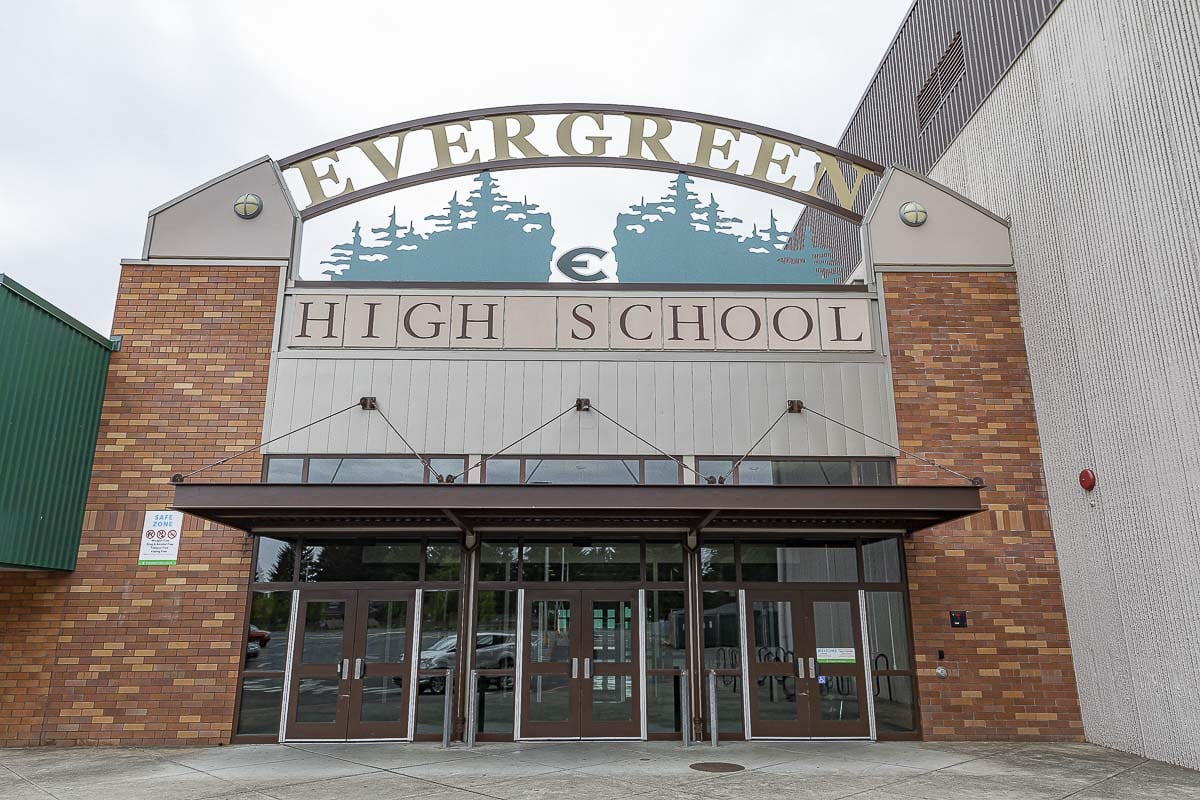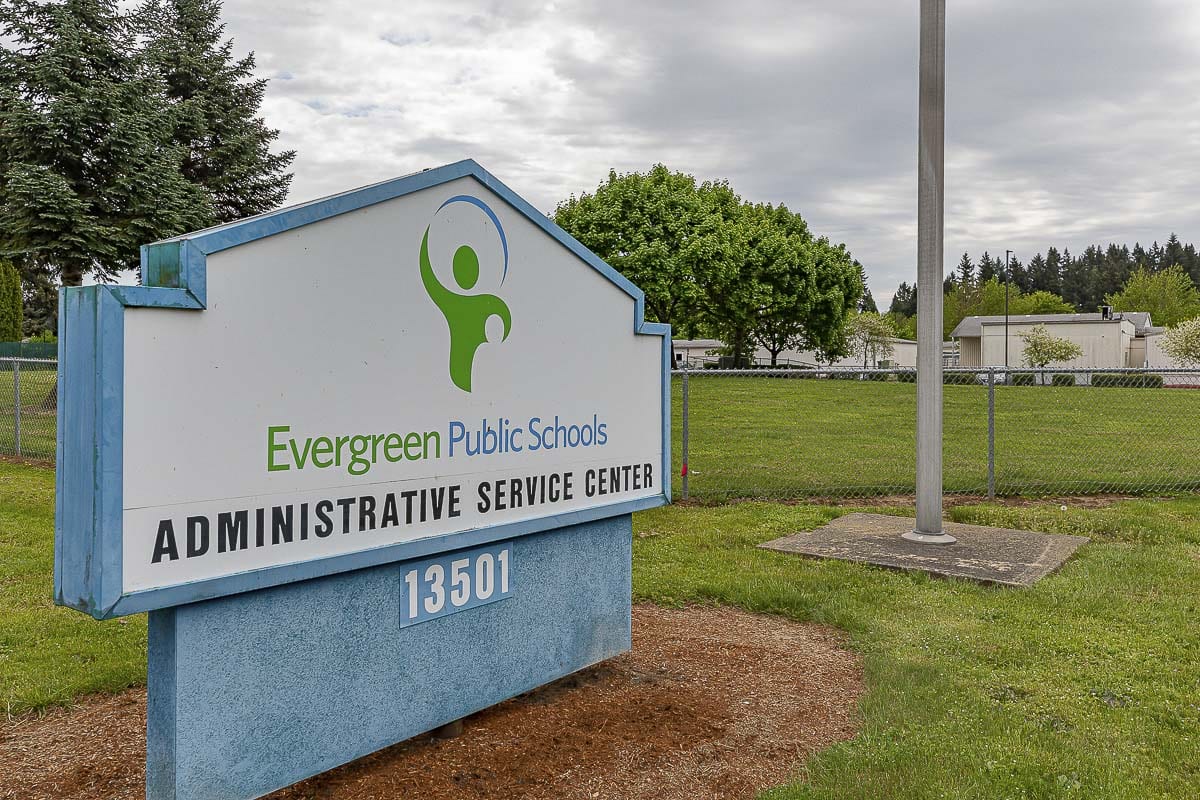District is still working on certain elements for attendance online; in-person would focus on masks and social distancing
VANCOUVER — Clark County is currently hovering in the high risk category for COVID-19 cases per 100,000 residents. This has reaffirmed the plans of school districts, like Evergreen Public Schools, that a solely distance learning platform will start the 2020-21 school year.
Clark County Public Health is recommending at least three weeks out of the high risk zone, before children can return to in-person instruction in schools.

Earlier this month, during a three-and-half hour School Board meeting, the district outlined for staff and families what their strategies will be when it comes to Distance Learning 2.0, and the far off but hoped for return to in-person instruction. The school board unanimously approved the plan.
“We want to be in a position where kids have their devices, where kids are able to access as quickly as possible the materials, we want to make sure that the plan that we’re presenting isn’t just posted on our website,” said Evergreen Superintendent, Mike Merlino. “Once we were at the appropriate moment in time, we were able to reach out to parents and let them know what they can expect when they come back.”
Evergreen has outlined how online learning will look for students and families on their website as well as in a presentation during their meeting by Julie Tumetly, the district’s executive director of teaching and learning. Working with Clark County Public Health and the Washington Office of Superintendent of Public Instruction (OSPI), Evergreen has developed protocols for when and if students return to class this school year.
When it comes to remote learning, every Evergreen student should now have, or be soon receiving, a Chromebook to access the district’s portal on Google Classroom, according to Tumetly. There are also enough wifi hotspots for every student to access the internet, she said.
The district plans to have a full six-hour schedule for students, even as they are learning at home. Students will not be beholden to only school hours, however, but will be counted as present or absent by logging on to their classes within a 24-hour period. Teachers will be live during the traditional school hours for synchronous lessons, which will be recorded for students to watch later as well.
Asynchronous lessons will also play a part in the schedules of students, such as high schoolers. Older students will have slightly more freedom to work on assigned projects, as well as having small group work.
“One of the main questions I hear a lot is what does their day look like?” Tumetly said. “Curriculum instruction has been working really diligently with all different groups and principals and finding out when we hear from parents and from students, what they want in a day. We’re looking at multiple synchronous sessions in one day. When we’re talking about synchronous, we’re talking about a time where teachers and students are all together [virtually]. Then having some asynchronous time where the students are doing something else. It’s chunked out throughout the day, one for the teacher and for the students.”
Tumetly made it clear that 2.0 will be very different since attendance will be taken and grading will be normal. The ‘do no harm’ mentality of the spring will no longer be in effect, and grades will be given based on a students overall effort and quality of work, not necessarily based on due dates, she said.

A question and answer time during meeting brought in inquires from staff and families about several topics, and chiefly among them were would there be penalization for late work and how would students be held accountable for participation, as many in the spring simply logged on a Zoom call and kept their cameras muted so they could give the facade of attendance.
Merlino, Tumetly and the rest of the board and administrative staff explained that a higher level of teacher-student communication would be employed as well as the tracking of student’s activity data on Google Classroom. These metrics, and several others, will be used to determine if a student is falling behind, failing to engage or needs extra help.
Limited and physically distanced space will be made available at school buildings for students who need extra help. Many schools are already operating their weight rooms for athletes with physical distancing and small groups of no more than five, according to Brian Grimstead, the chief schools officer. A similar approach is expected to be used with students in need.
Later on in the evening several parents and community members commented on the plans and shared their thoughts on the direction the district and surrounding districts are taking with regards to remote learning. In some cases it was quite critical.
“We’re at war with COVID they say, but this analogy is wrong, because unlike war, where soldiers risk their lives so society and our way of life can continue, with COVID we’re asked to sacrifice our way of life so we can risk nothing,” said parent Adam Moore. “Words like synchronous, design tools and collaboration, lean in so parents can rely on, parent facing pages, models, reached out, talked about, conversations, it’s my hope, if needs be, modularized forms; these are words without meaning that are abstract, designed to avoid the obvious: there are no details.”
When it comes to the future possibility of reopening schools, Evergreen has contingency plans for several scenarios: hybrid of in-person and remote and full return to in-person.
If students return to school in the 2020-21 school year, the most critical components will be physical distancing, masks and attestation, Tumetly said. When students leave for school in the morning, parents will be required to check for symptoms and then log information into an online form. Students who do not have easy internet access at home will have a form to fill in first thing when arriving at school.
The district has also stock piled 6,000 adult-sized, reusable masks, 17,500 disposable adult masks, 5,000 reusable child-sized masks, and 12,500 disposable child-sized masks for students who forget their mask when arriving at school, Tumetly said.
On the subject of ventilation issues at schools, the district met with health professionals and HVAC experts to determine the best settings and changes needed at their buildings.
Susan Steinbrenner, Evergreen’s executive director of facilities, explained that in many cases they will be disabling their air systems auto-occupancy sensors, so that classrooms receive equal air circulation. School buildings will also be doing two hour morning flushes of air so that outside, non-recirculated air is moved into and through the buildings.
For more information on the reopening plans visit evergreenps.org.




